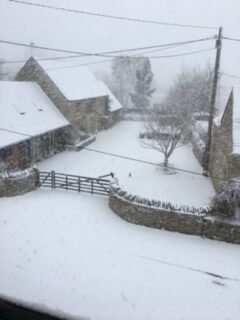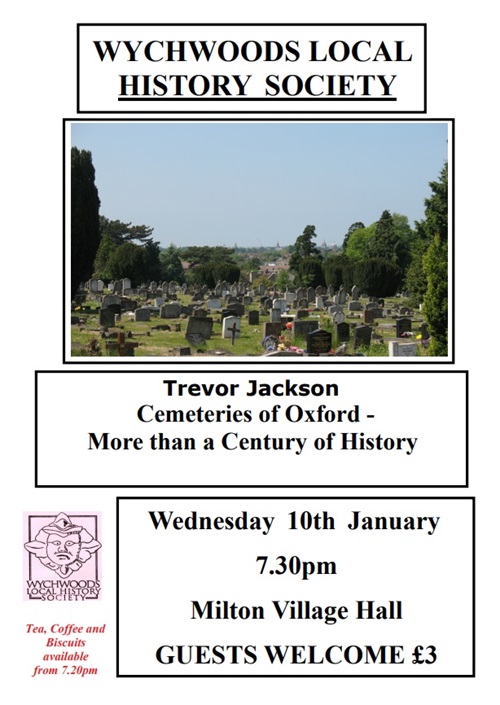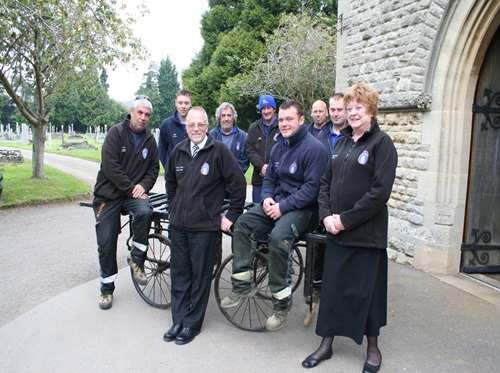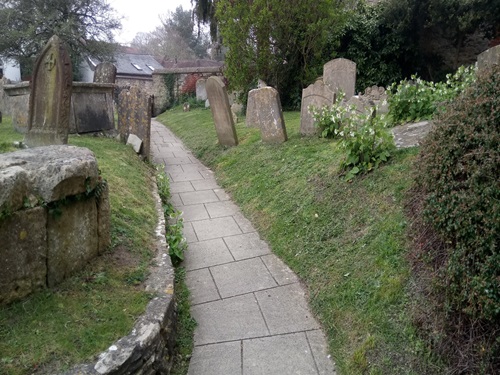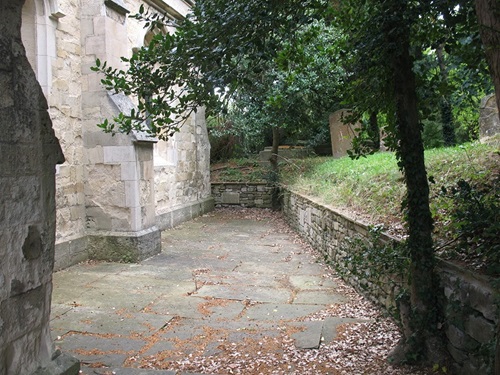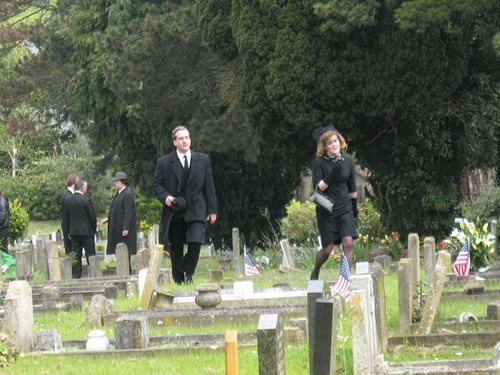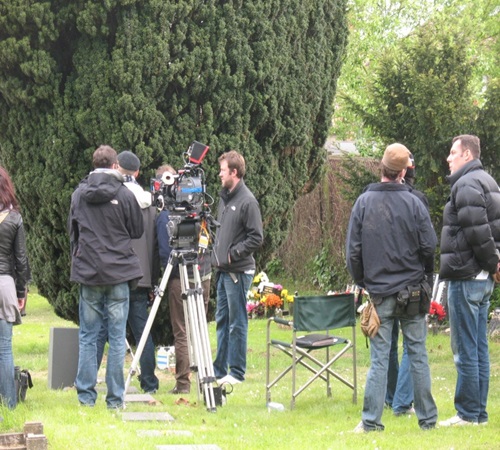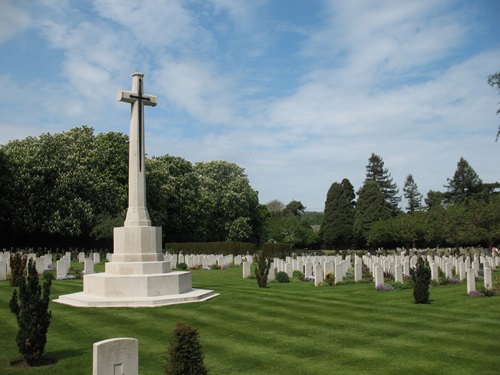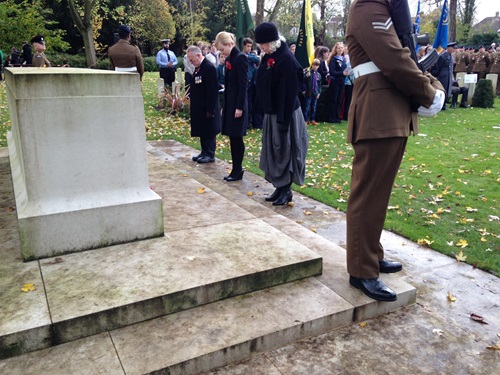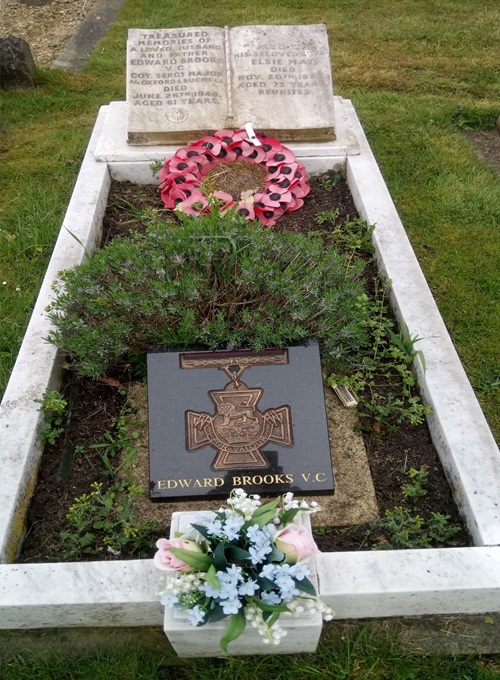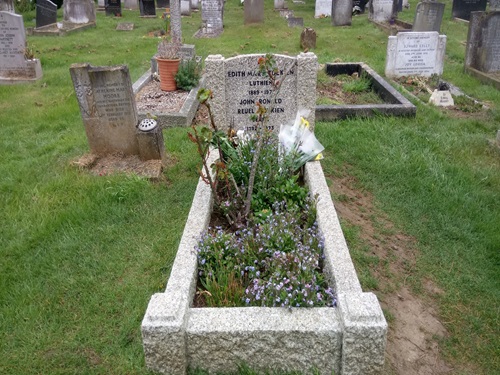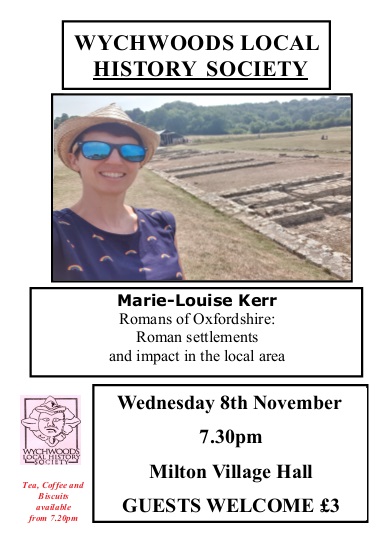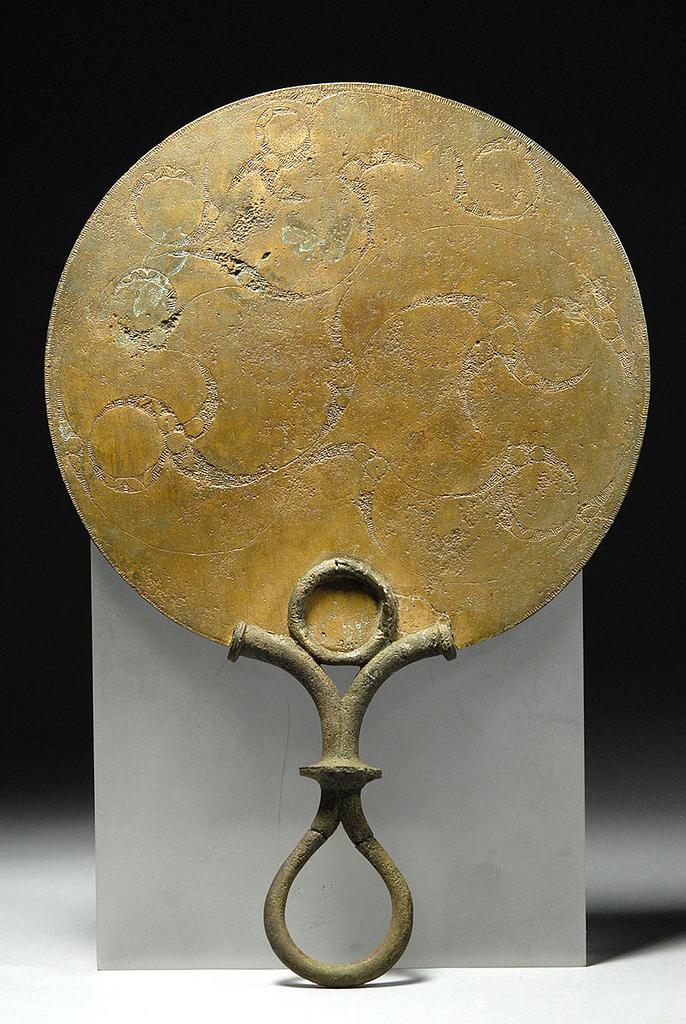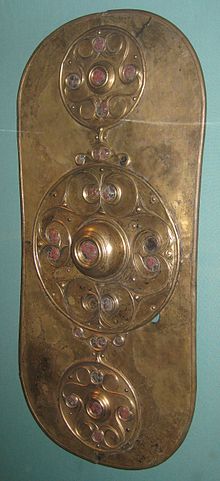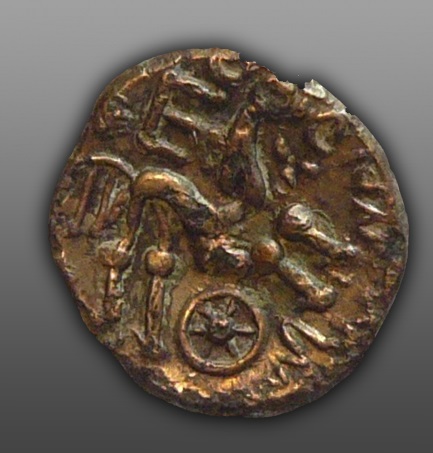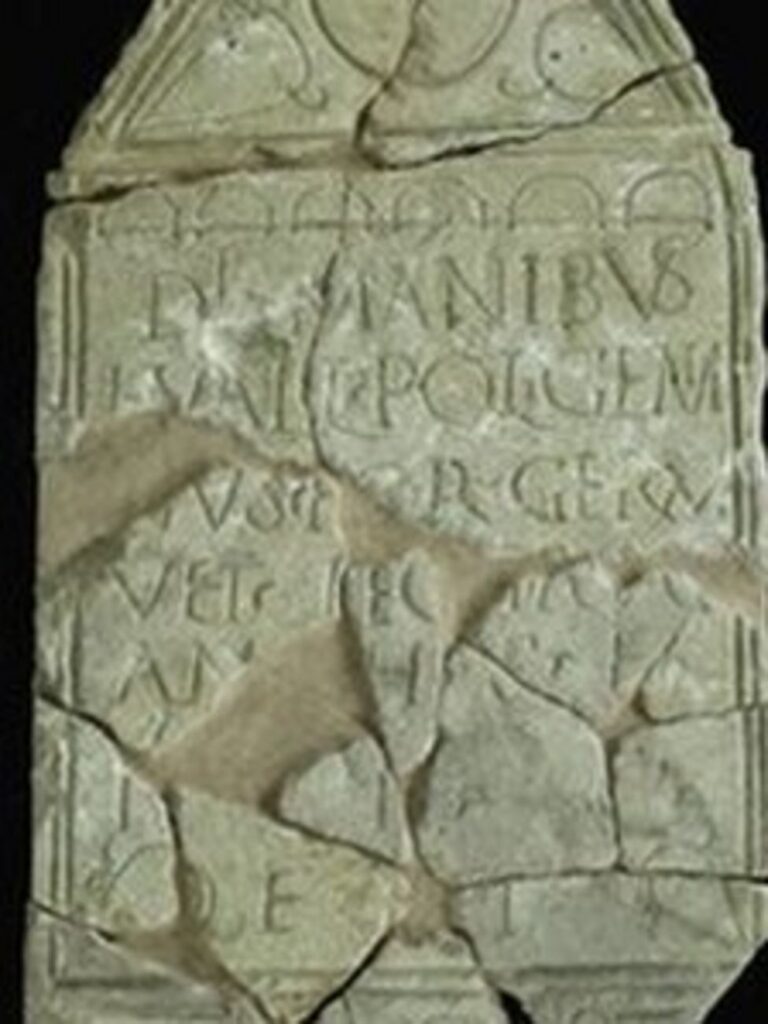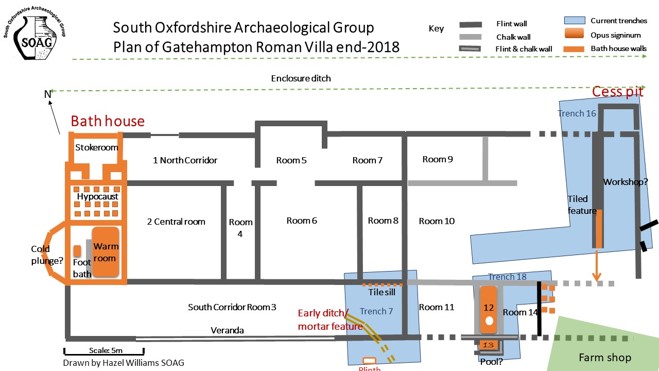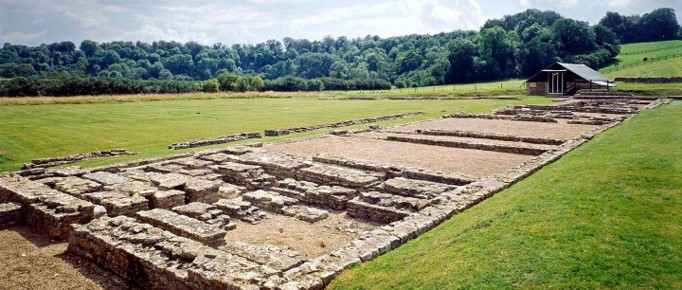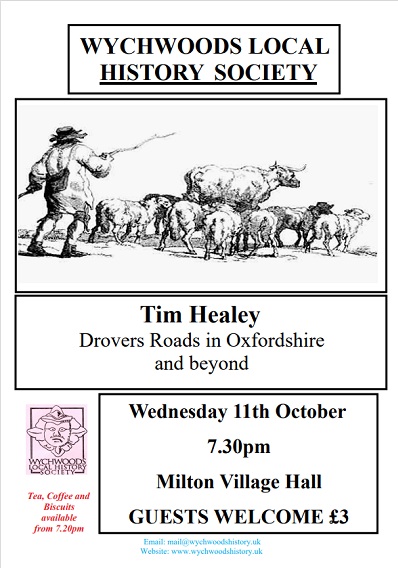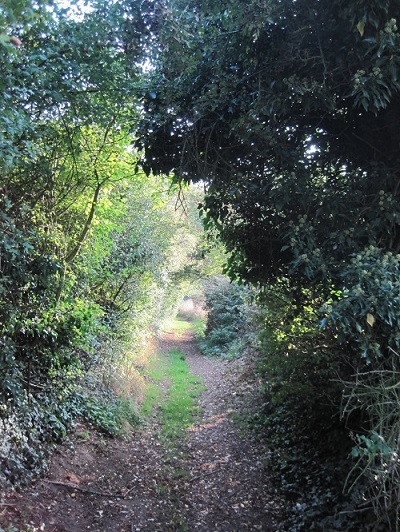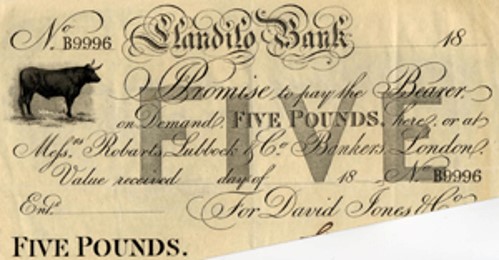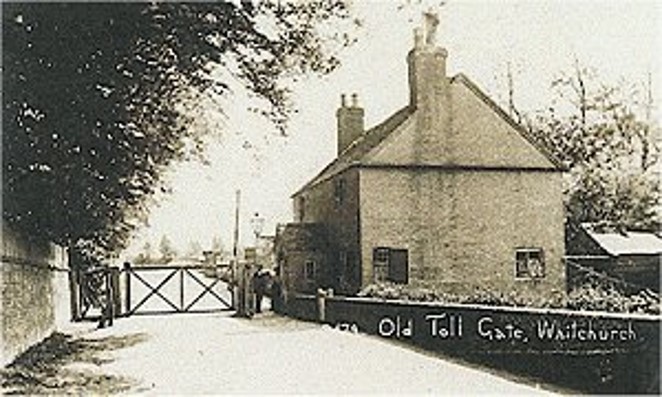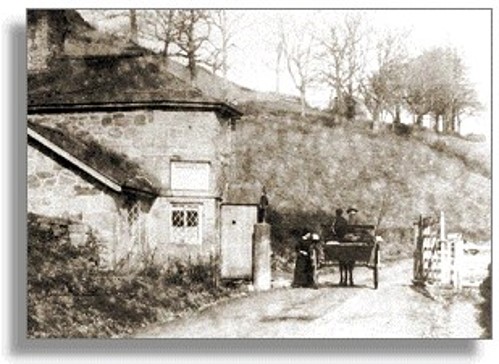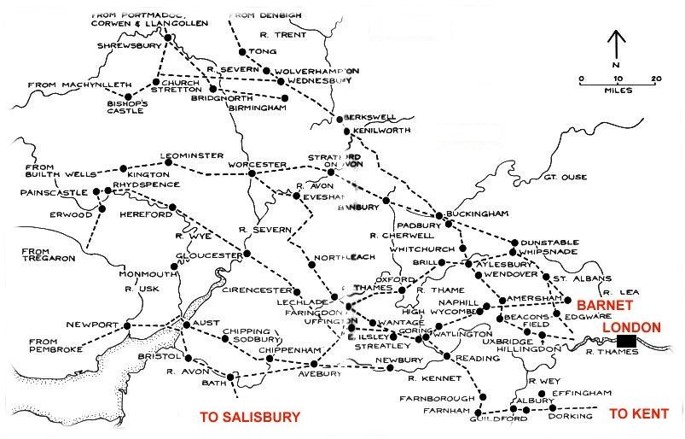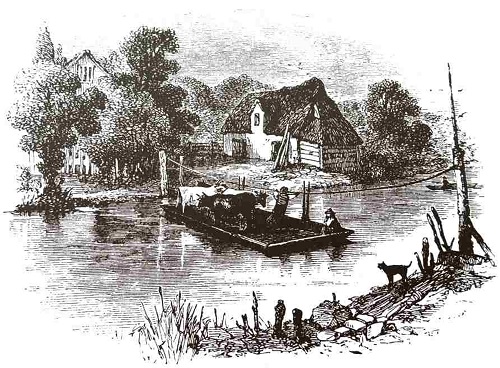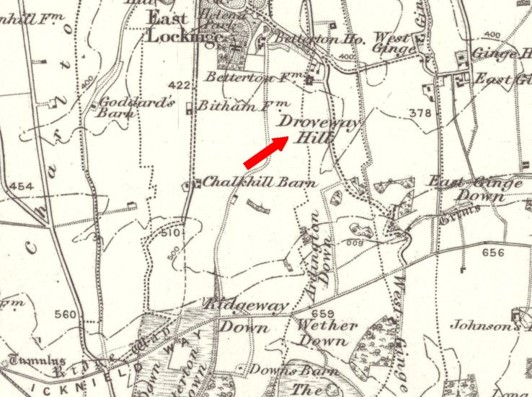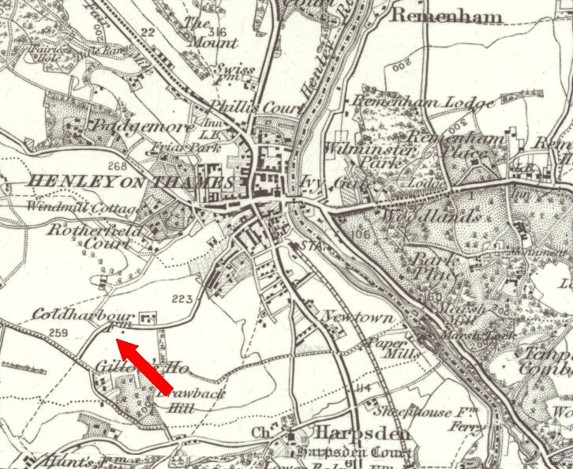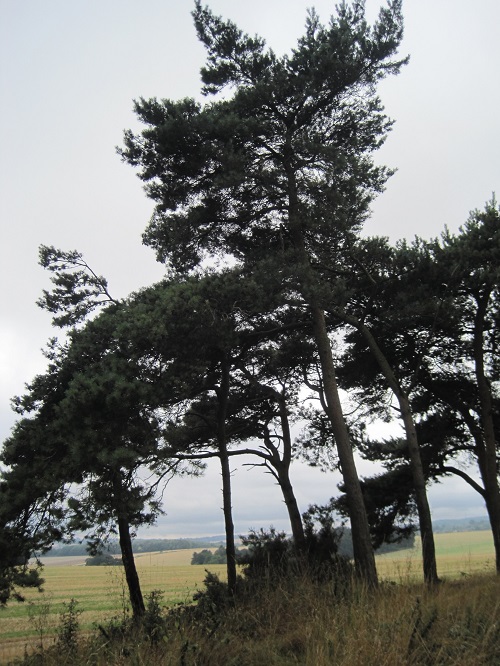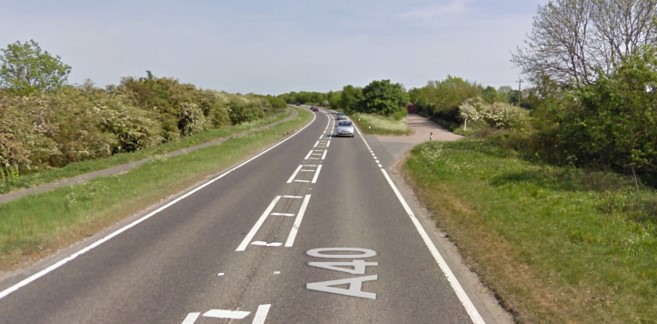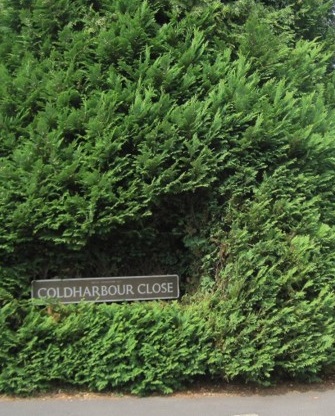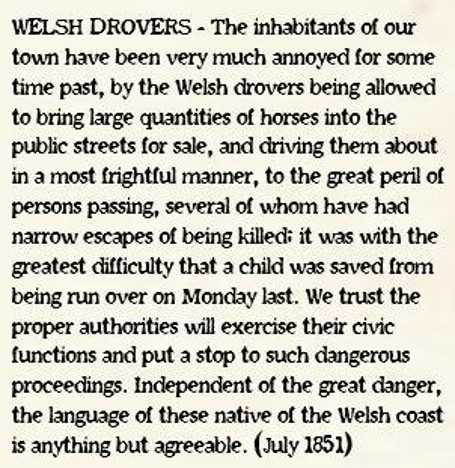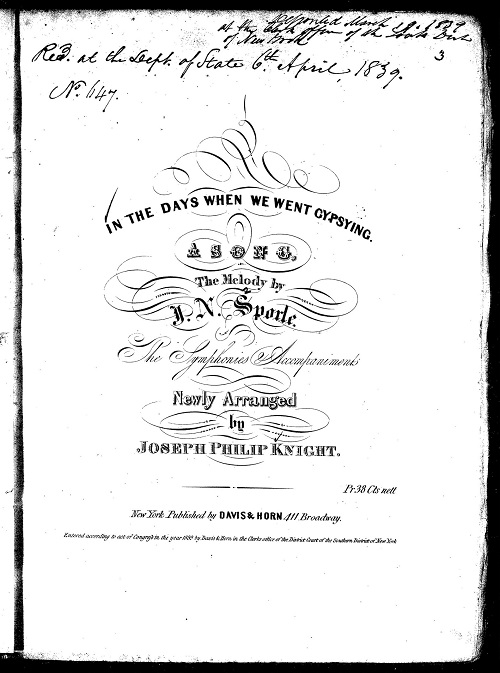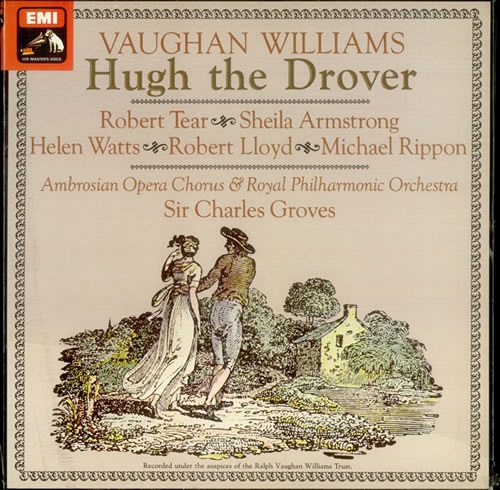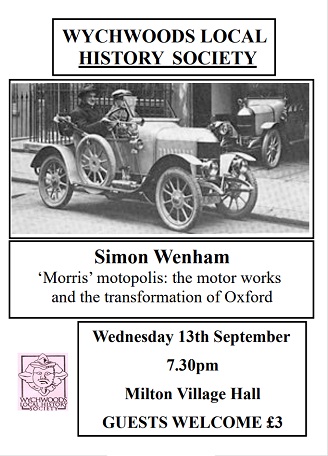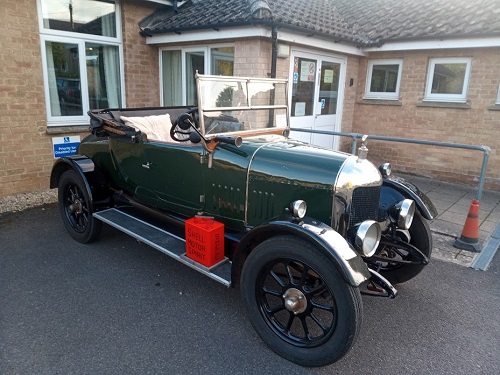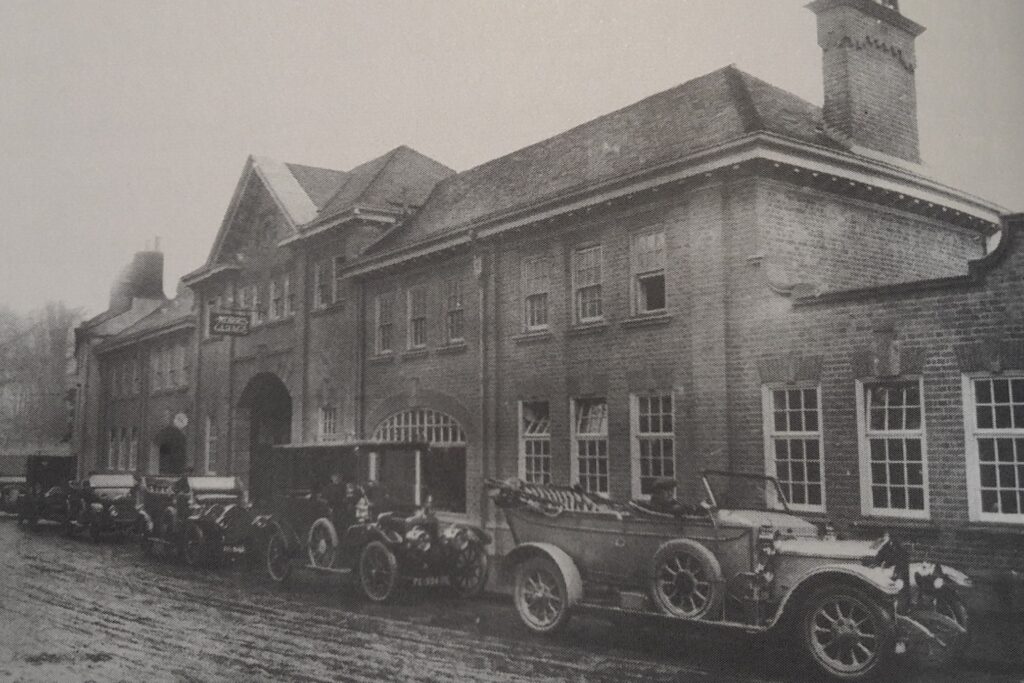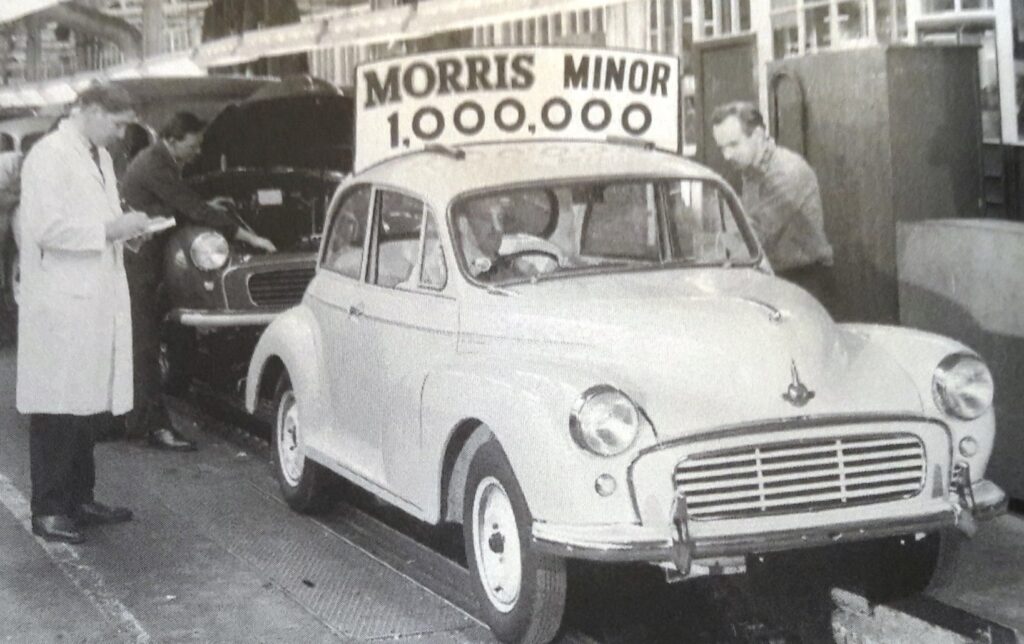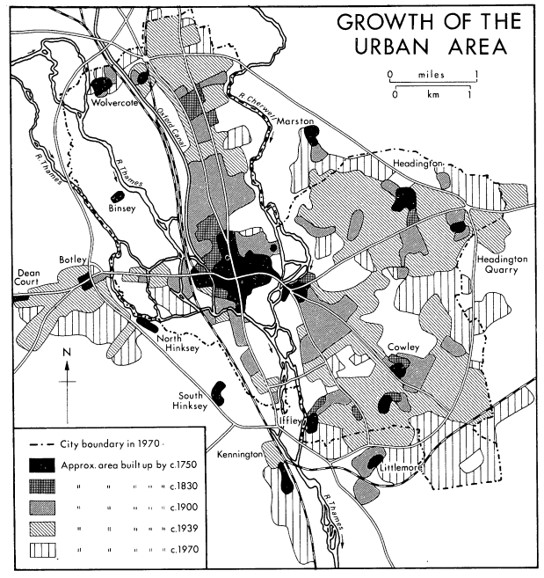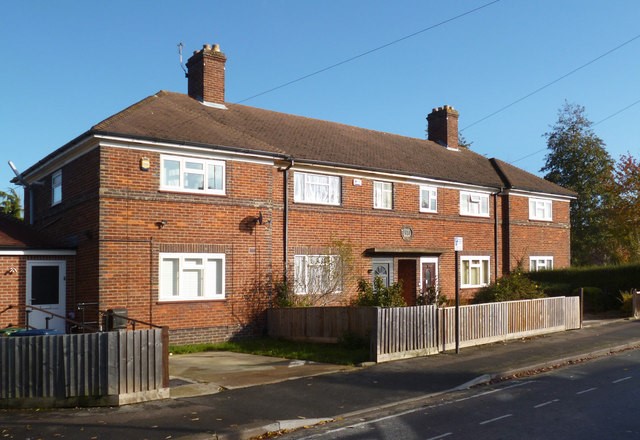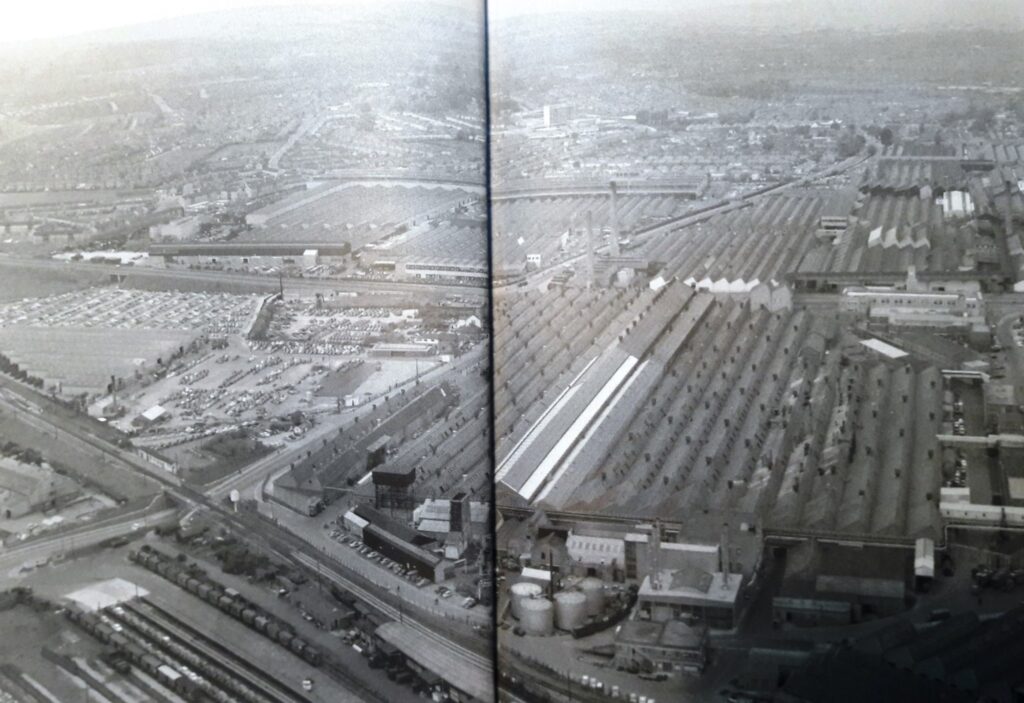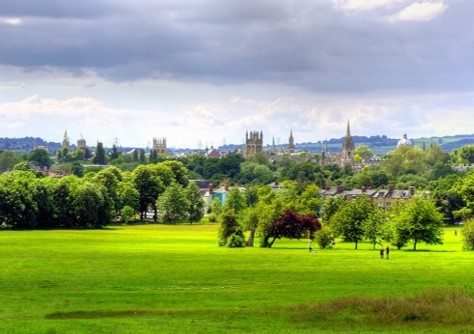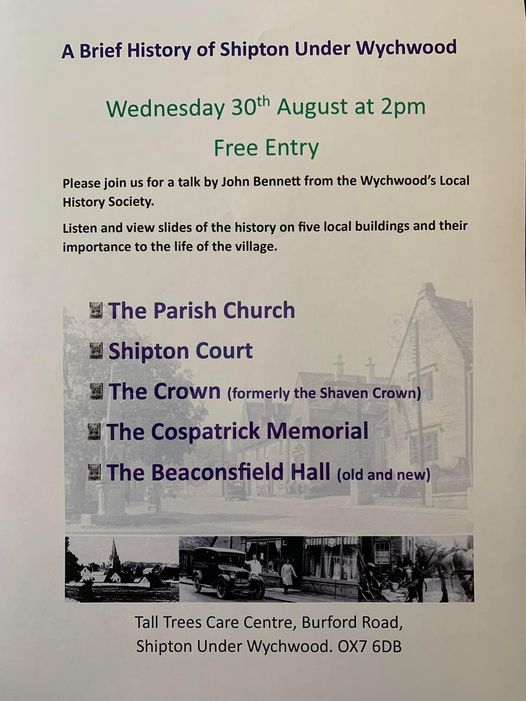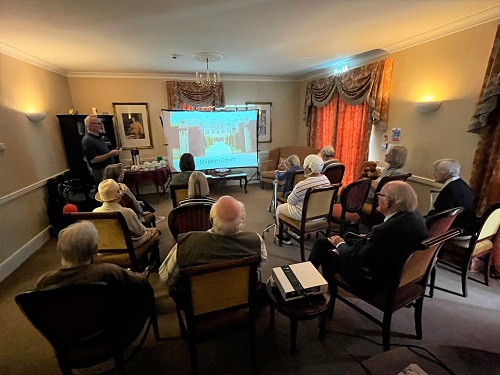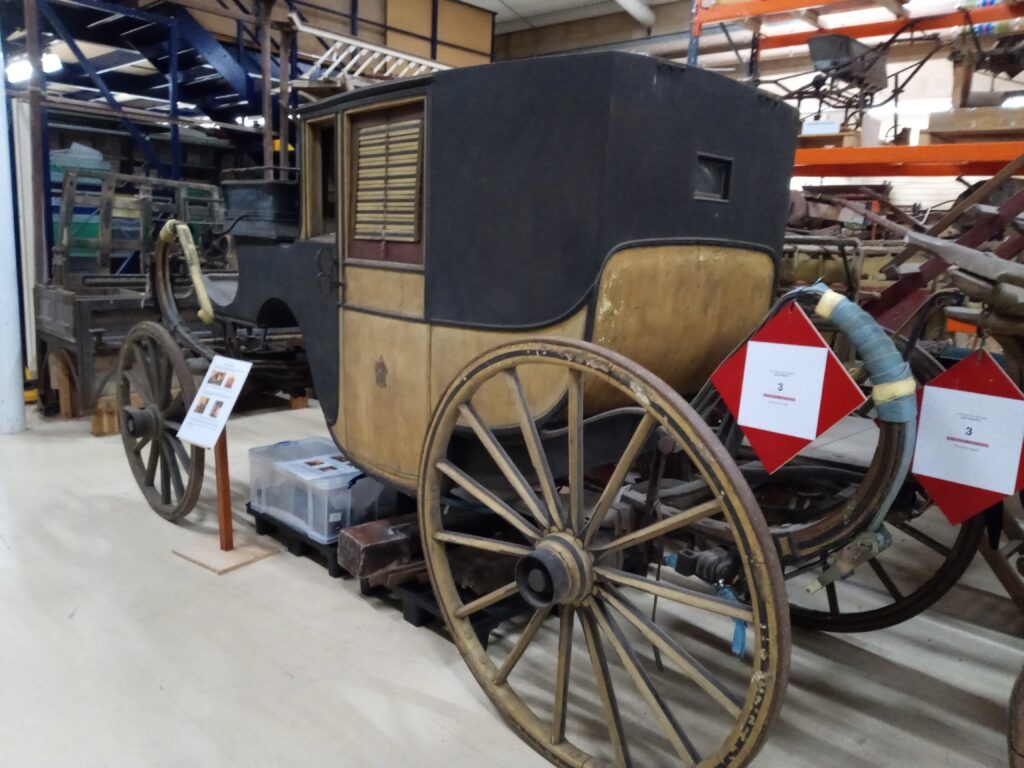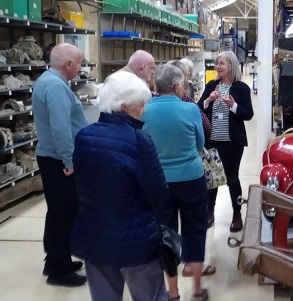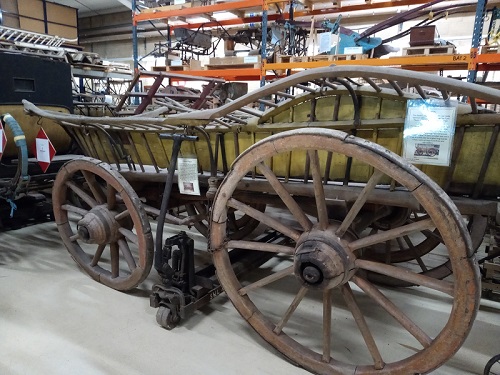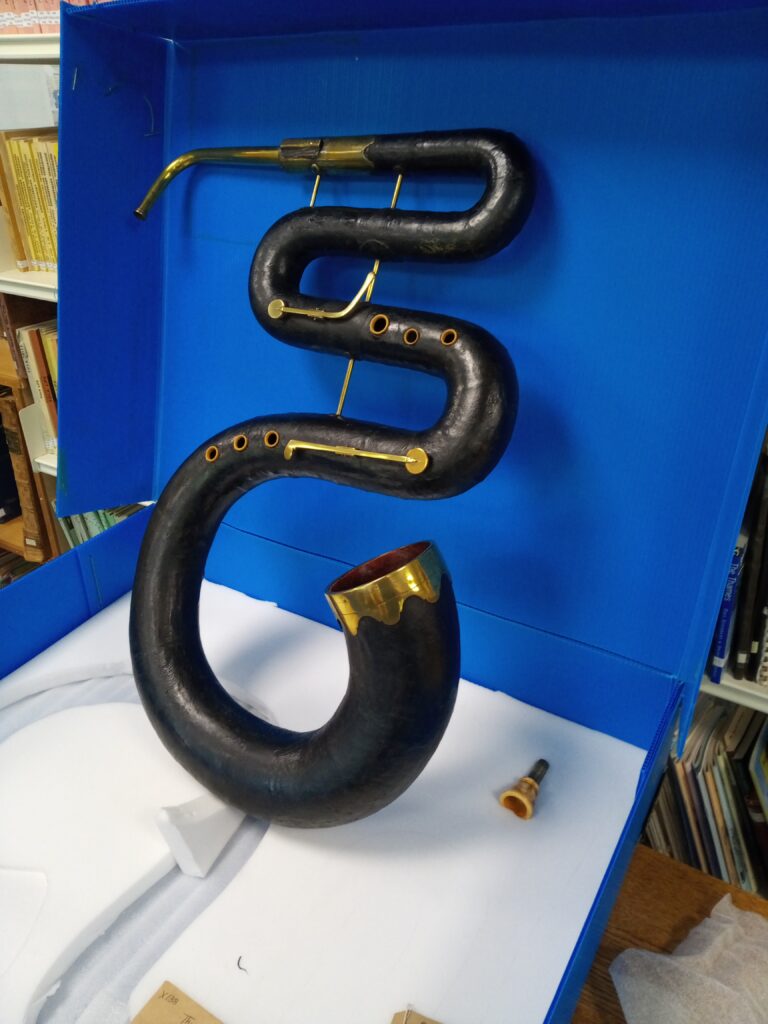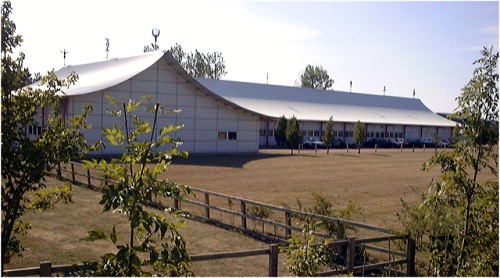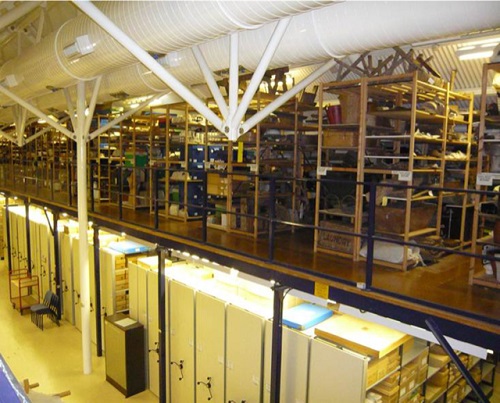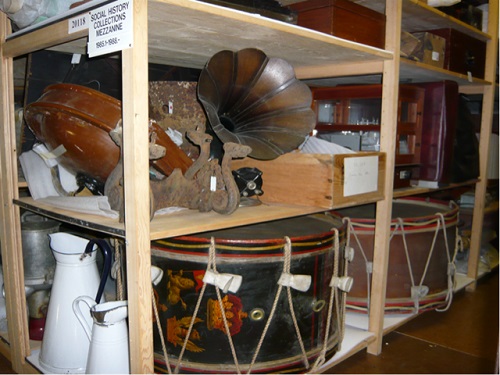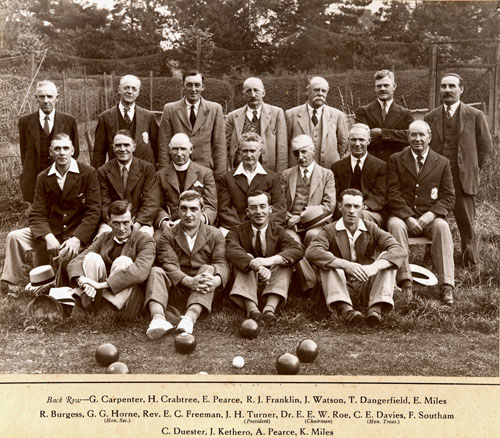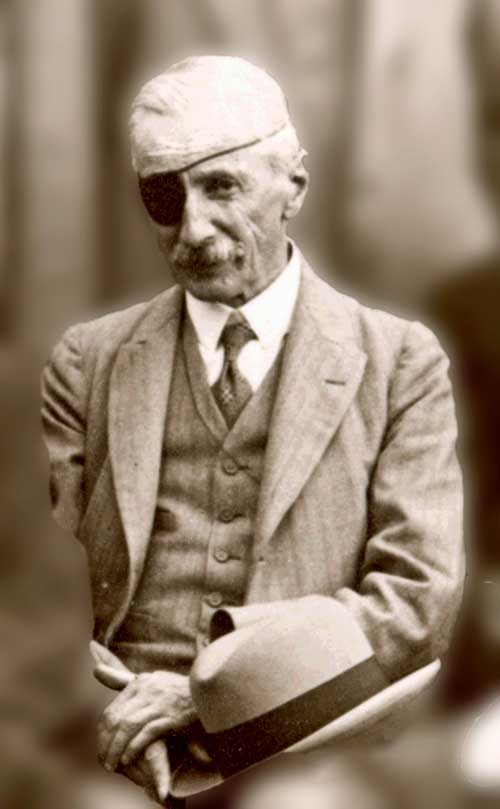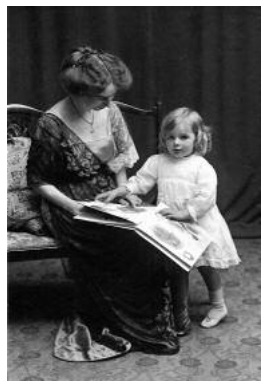To complement our latest photo-sampler exhibition in the The Wychwoods Library in Milton, here we revisit a few recent and historic weather events courtesy of WLHS members and other contributors locally.
Shipton in the Snow
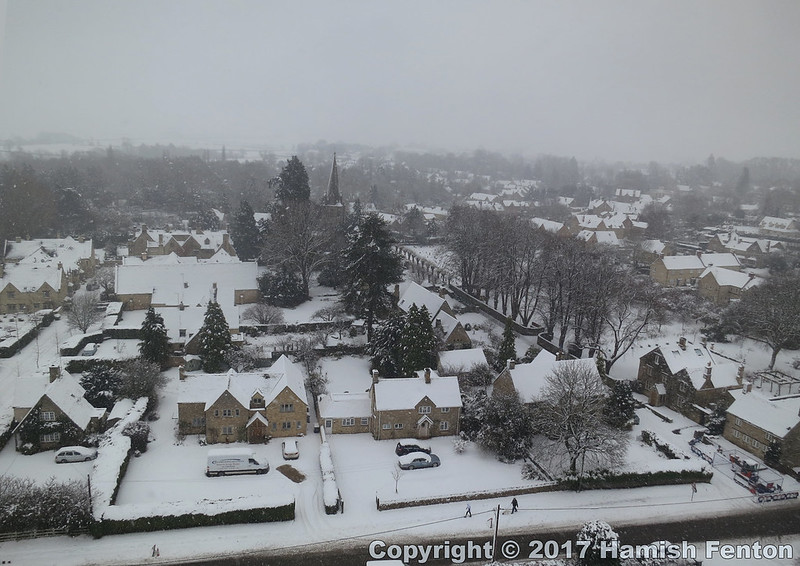
First-off, we were pleased to find this superb aerial view of Shipton under Wychwood created by Hamish Fenton, which forms part of his library of Shipton images.
From around 2am on Dec 10th 2017, around 6 inches of snow had fallen with temperatures around freezing. Trees heavily loaded with snow brought powerlines down resulting in no electricity for most of the village and some neighbouring areas.
More of Hamish’s Shipton images are here .
Revelations in the Snow
In Jim Pearse’s article ( here), he explains the abandoned benefits of the old ridge and furrow system. The width of modern machinery – drills, sprayers and combines – causes difficulties on ridge and furrowed land. They hit the ridges too hard and miss the furrows. Jim tells us this is the main reason for the modern levelling of these fields.
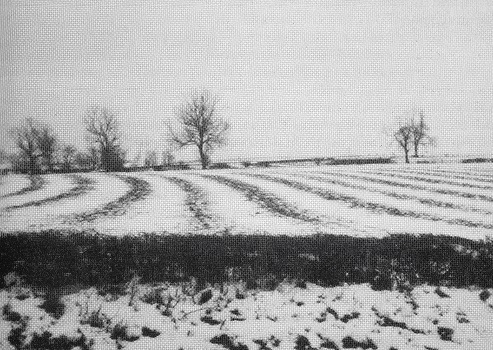
But ridge and furrow has an advantage on grassland since, after prolonged heavy rain, a flat field will be waterlogged whilst furrows channel away all the excess water allowing the ridges to dry more rapidly. We witness the effects in recent years, and this year included, of prolonged rain on fields locally.
Another Discovery
Here [ Link ] was another contribution from local resident Ian Sanders. Again, the arrival of a dusting of snow can reveal hitherto invisible lines in the landscape.
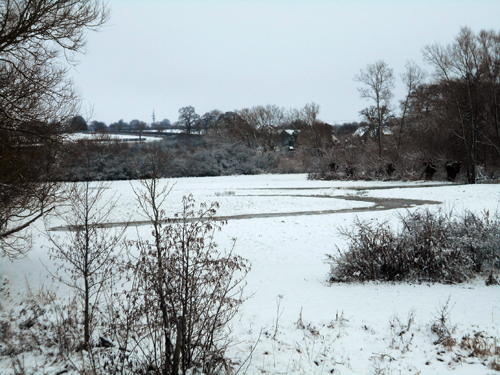
On Sunday 24th January 2021 the snow came, transforming the landscape, and revealed a watercourse running across the field to the left of the Evenlode as you look northwards from the bridge.
Ian tells us that if we compare this to the 1830 map of the area, we see that the river did not run straight to the bridge as now, but meandered across this field in very much the same pattern as the watercourse that shows up in this snowy scene.
If this watercourse is in fact the old course of the river, then it confirms the accuracy of the 1830 map.
Weather Related Features – The Wychwood Magazine
Readers of The Wychwood magazine are regularly updated by the weather reports of local meteorological expert John Miskin. Examples of his reports can be found here, and here.
In his 2018 article “Let’s Talk About the Weather” , John mentions particularly the winter of 1981/2. This winter features also in a couple of the images in our January 2024 library display.
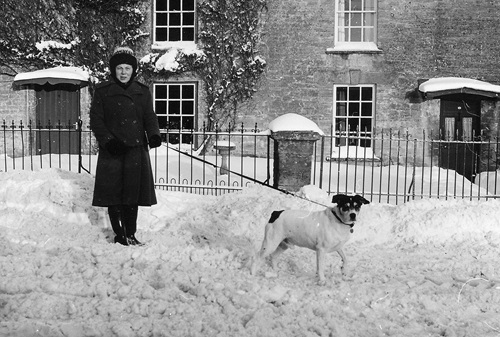
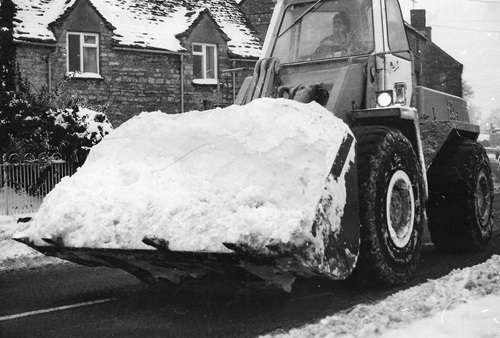
John tells us that 1981/2 was particularly hit by snow, when over 40cm of snow fell in December and January. It was on the night of the 12/13th January 1982 that he recorded the lowest temperature of -20.7°C (-5.2°F). In fact, it is possible that the temperature could have been as low as -22°C in the frost hollow 450 metres on the Ascott Road heading away from Shipton.
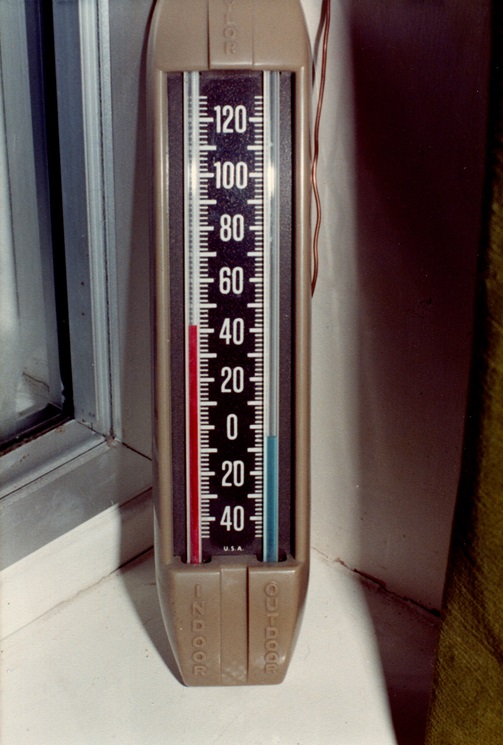
The maximum temperature on the 13th was only -9.8°C (14.3°F) after a particularly heavy snowfall and under clear skies.
Here are some images of winter 1982 in and around Shipton from John’s collection
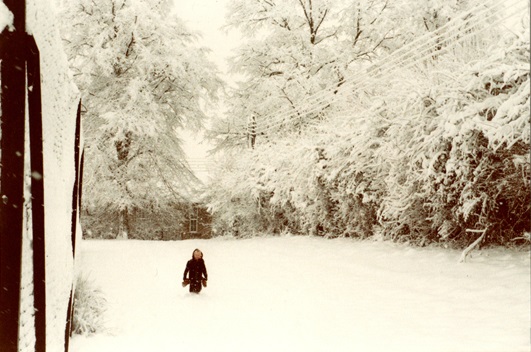
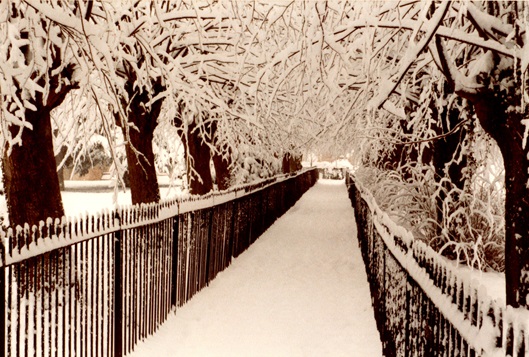
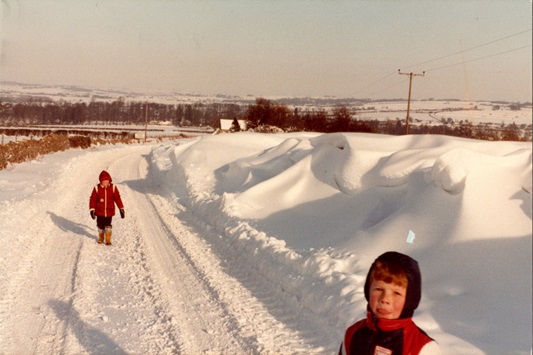
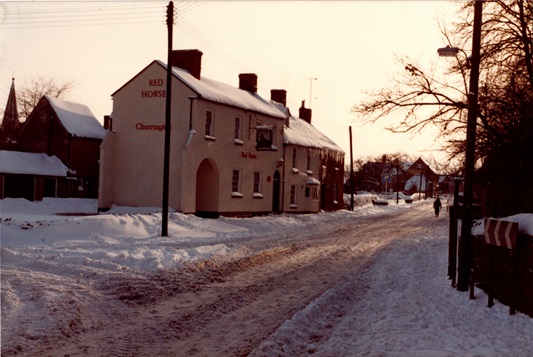
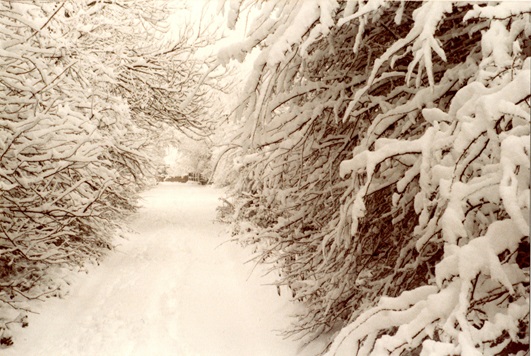
.. and finally, for now…
